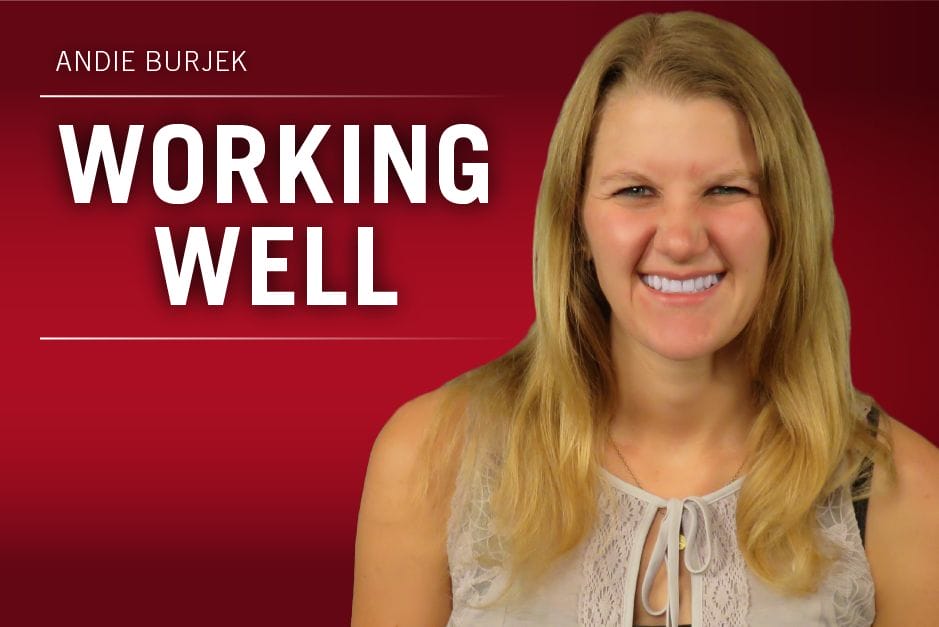It’s my first blog of 2018, and, boy, are we off to a quick start! I’ve mentioned before my keeping track of the EEOC vs. AARP wellness incentive disagreement, and we got some action on that in late December. Meanwhile, I’m deep in research about two meaty topics for which I’d love to gauge your thoughts.
Let’s begin!
Wellness programs took a hit recently when a federal judge ruled that an Equal Employment Opportunity Commission rule regarding incentives will be nullified as of Jan. 1, 2019.
A few different wellness companies told me their reactions to this news, and, to my surprise, not all of it was panic or negative. They were fairly varied.
The rule in question defined the word “voluntary” in relation to wellness programs. The Americans with Disabilities Act and Genetic Information Nondiscrimination Act limit what information employers can ask for from its employees. But in a voluntary wellness program employers can get around some of those limits because the program is voluntary.

The EEOC rule allowed wellness programs to be voluntary if the incentive or penalty was no more than 30 percent of the cost of the health plan. In his initial decision, Judge John D. Bates, Senior United States District Judge of the United States District Court for the District of Columbia, said that the 30 percent incentive “is the equivalent of several months’ food for the average family, two months of child care in most states, and roughly two months’ rent” and said that the “fee of that magnitude could be especially coercive to lower-income employees and people with disabilities, who on average have lower incomes than those without disabilities,” according to the LA Times.
[Also read: “New Wellness Bill HR1313 Gets Flak for Genetic Privacy Concerns”]
One wellness vendor is celebrating this decision.
Outcomes-based programs are “pretty much dead,” and that’s a good thing, according to Al Lewis, CEO and co-founder of wellness education company Quizzify. He believes the judge was completely right in this decision.
“This changes everything. Without financial coercion, most employees aren’t interested,” he said in an email interview.
Employers should know that the ruling does not apply to all areas of wellness, just those involving medical exams and inquiries, he added. For example, fitness-based programs are still fine unless the company measures fitness.
Health risk assessments are also impacted, he added, as they would have to avoid medical inquiries. They could ask questions like, “How much broccoli do you eat?” or, “Would you like to receive information about diabetes?” but not “Are you depressed?” or “Do you have diabetes?”
Many vendors do not have the same celebratory attitude toward this regulation change. The ruling may be missing the boat, according to Henry Albrecht, CEO of engagement company Limeade. What some parties involved in this ruling call “coercion,” he calls “true support for whole-person well-being.”
[Also read: “Weighing the Value of Workplace Wellness”]
“Ultimately, companies running science-based programs with flexible technology and incentive systems shouldn’t lose sleep over the new EEOC changes. We’re not,” said Albrecht. “Programs that improve employee well-being aren’t going away. They’re too powerful because they drive employee performance, engagement, retention and company profit.”
Meanwhile, Lauren Chana, director of legal services at Vitality Group, a Chicago-based wellness company, has a different attitude toward the ruling. Chana, who ensures that the company’s program and their employer clients are compliant, is not concerned about the ruling, but curious.
“This opens a lot of doors for questions and uncertainty for employers,” she said. “For example, this ruling does not impact the ACA. The EEOC Wellness Rules, presumably, were designed to align with the ACA, but that will change. I am most curious to see the approach the EEOC and courts take to make this a practical rule moving forward.”
She also stressed that this does not have a big impact employers yet. The new rules don’t go into effect until Jan. 1, 2019, and “we haven’t a clue what the compliance date will be from there,” she said.
“With any new area, regulations are bound to go through a level of growing pains,” she added. “Employers will just need to be ready to keep adapting and adjusting until the regulations are able to strike the needed balance between the purpose of wellness, protection of employees and operational feasibility for employers.”
Each new development in wellness programs, whether by regulation or court cases, is pretty significant, said Calvin Chambers, an attorney at Hall Render, the nation’s largest law firm focused exclusively on matters specific to health care organizations.
After the initial EEOC rules came out, employers had some sense of certainty with regulations, he said. What they should expect now is that the incentives will either remain at 30 percent or lessen.
Employers who use wellness vendors for their programs may be confused at what to do next with plan design. A recent webinar addressed employer concerns and made suggestions for how they can make sure they can continue their programs. More on that in a future post.
Feel free to comment below or tweet at me @Andie_Burjek if you have any thoughts on this topic.
Meanwhile, the next two posts I’m working on are related to two articles I’ve been assigned: The Future of Retirement, and the Demographics of Entrepreneurship. I’ll pose two questions now. If you have any thoughts or a response, feel free to share:
What are your personal retirement concerns?
Can benefits be incorporated in startups to retain a more diverse group of employees?
Thanks for reading!
Andie Burjek is a Workforce associate editor. Comment below or email editors@workforce.com.

